This baked fish in salt pastry is a serious show-stopper — a whole fish, stuffed with lemon slices, wrapped in salty dough and baked in its own deliciousness.
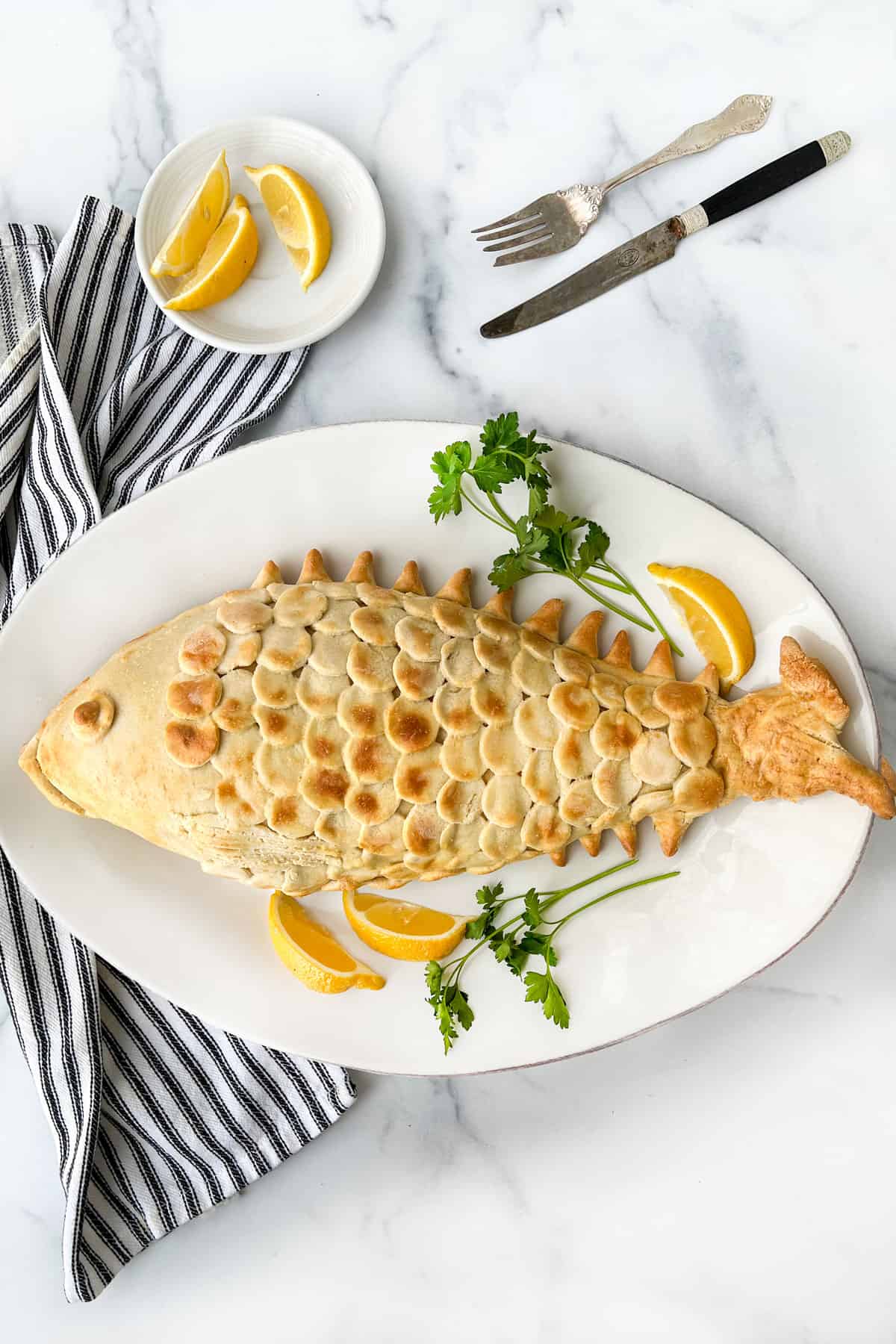
When I saw a picture of a fish baked in salt pastry in Josh Niland's cookbook Take One Fish, I knew I had to have it. It looks absolutely amazing and the only thing better is the way it tastes!
Why Bake Fish In A Salt Pastry?
So many great reasons:
- Moisture retention: The salt pastry forms a protective crust around the fish, sealing in every bit of moisture during the cooking process and creating a beautifully tender and succulent result.
- Flavor infusion: The salt pastry infuses the fish with salt as it cooks. It also allows the lemons inside to enhance the taste of the fish without overpowering its natural flavor.
- Even cooking: Baking fish in a salt pastry helps to ensure the fish cooks evenly. The pastry acts as a heat conductor, distributing heat evenly around the fish. The result is a perfectly cooked fish that's as juicy and flavorful as can be.
- Presentation: I love beautiful festive food and, I must say, this dish wins the prize. It brings smiles to all. And then there's the dramatic moment when the pastry is sliced open, revealing a perfectly cooked fish inside, which elicits "oohs" and "aahs" and more smiles. If you like creating excitement at the table, this fish in salt pastry will definitely do the trick!
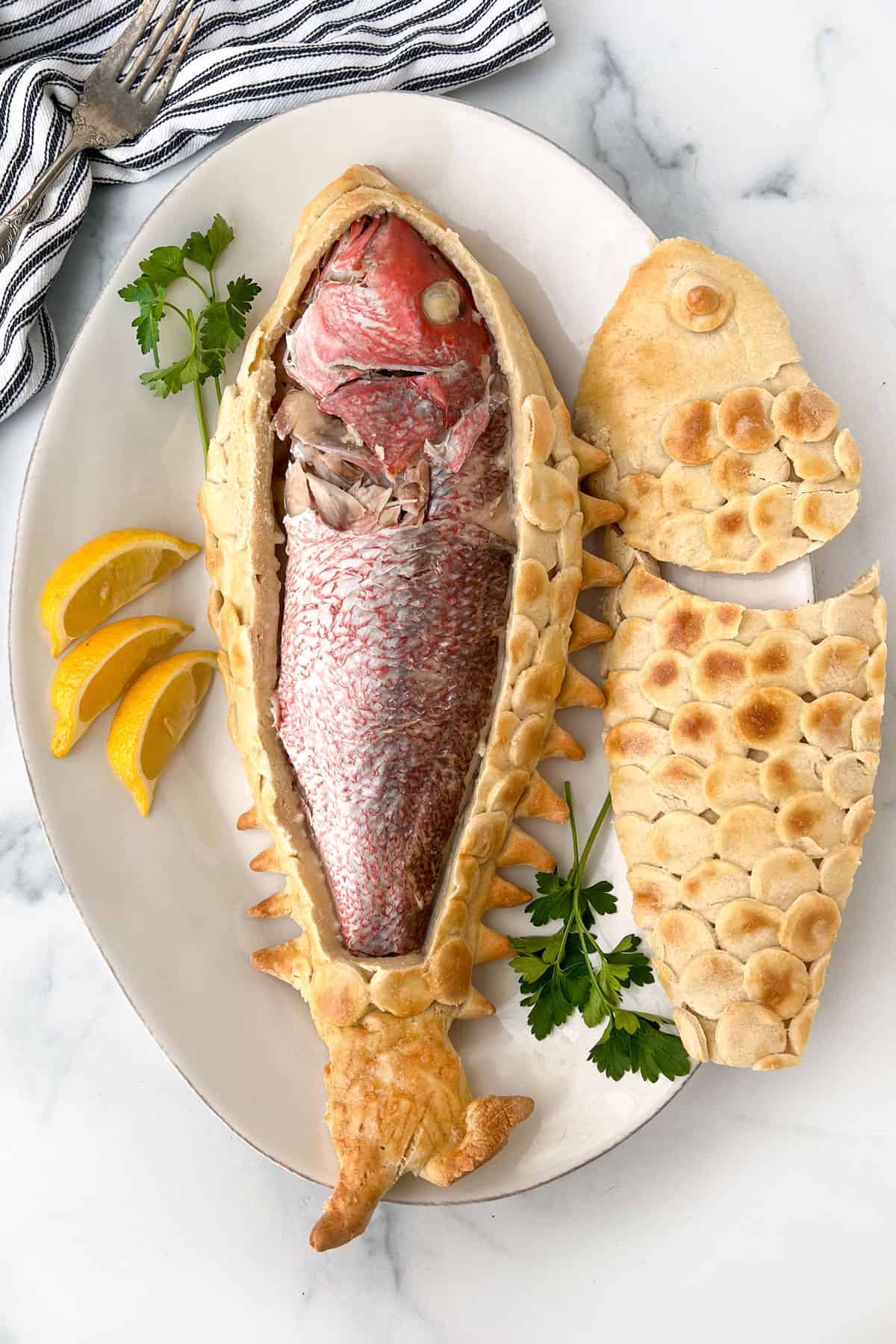
Ingredients
It takes very little to make this impressive dish — just five ingredients:
- A whole fish: Gutted and scaled (and pin-boned if possible). Snapper or Branzino are good options. The fresher the better of course.
- Lemon: For stuffing the cavity. Or feel free to swap the lemons out for herbs, peeled garlic, sliced ginger or a combination.
- Flour: All purpose is best.
- Fine salt: And lots of it.
- Egg whites: For the dough and to brush on the pastry before baking.
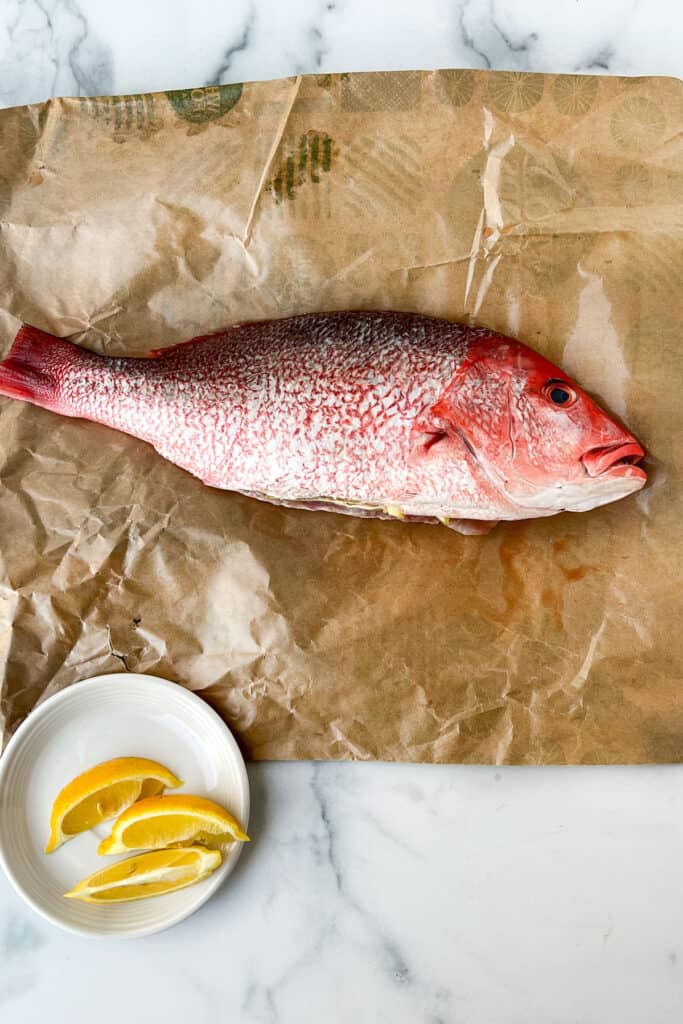
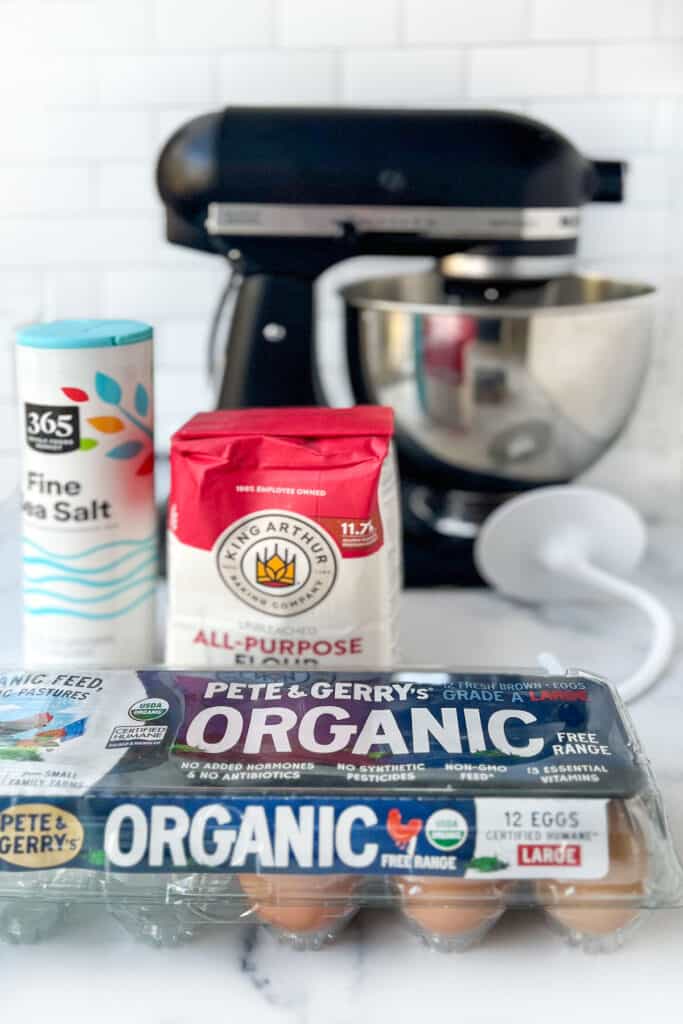
How To Prepare Baked Fish in Salt Pastry
While it may seem intimidating at first, this recipe is not that hard. Even if you've never made dough, this dough is simple to prepare and decorating the pastry so it looks like a fish is a lot of fun! Here's how to do it:
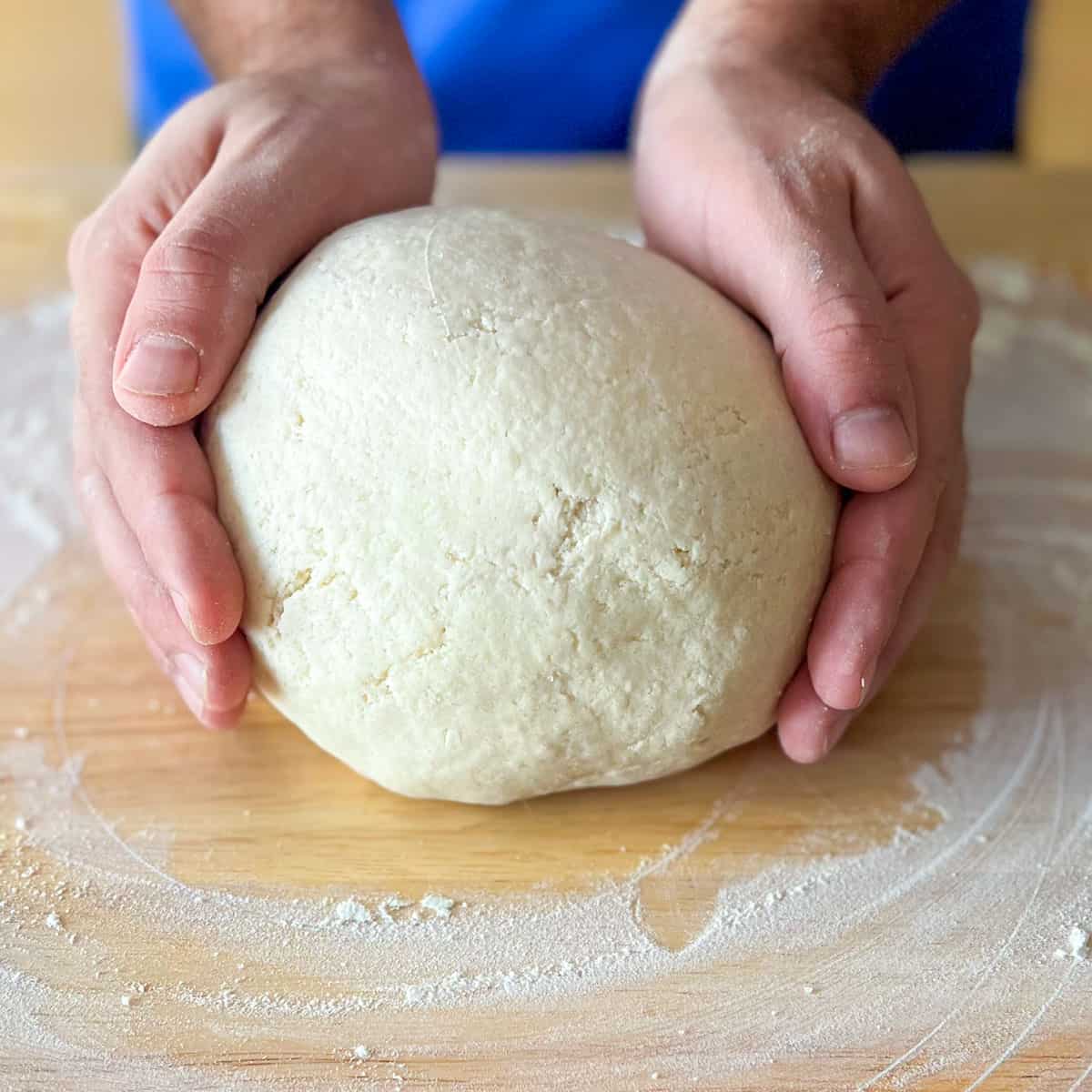
1. Make a Salt Dough: Combine flour, salt, water and egg whites in the bowl of a stand mixer and mix on low until fully combined. Give it a few kneads and wrap in plastic wrap to rest for at least 45 minutes. Alternatively, combine the ingredients in a large bowl, mix with a spoon until combined, then knead for 10 minutes until smooth. (The dough can be made ahead and stored in the fridge for up to 24 hours.)
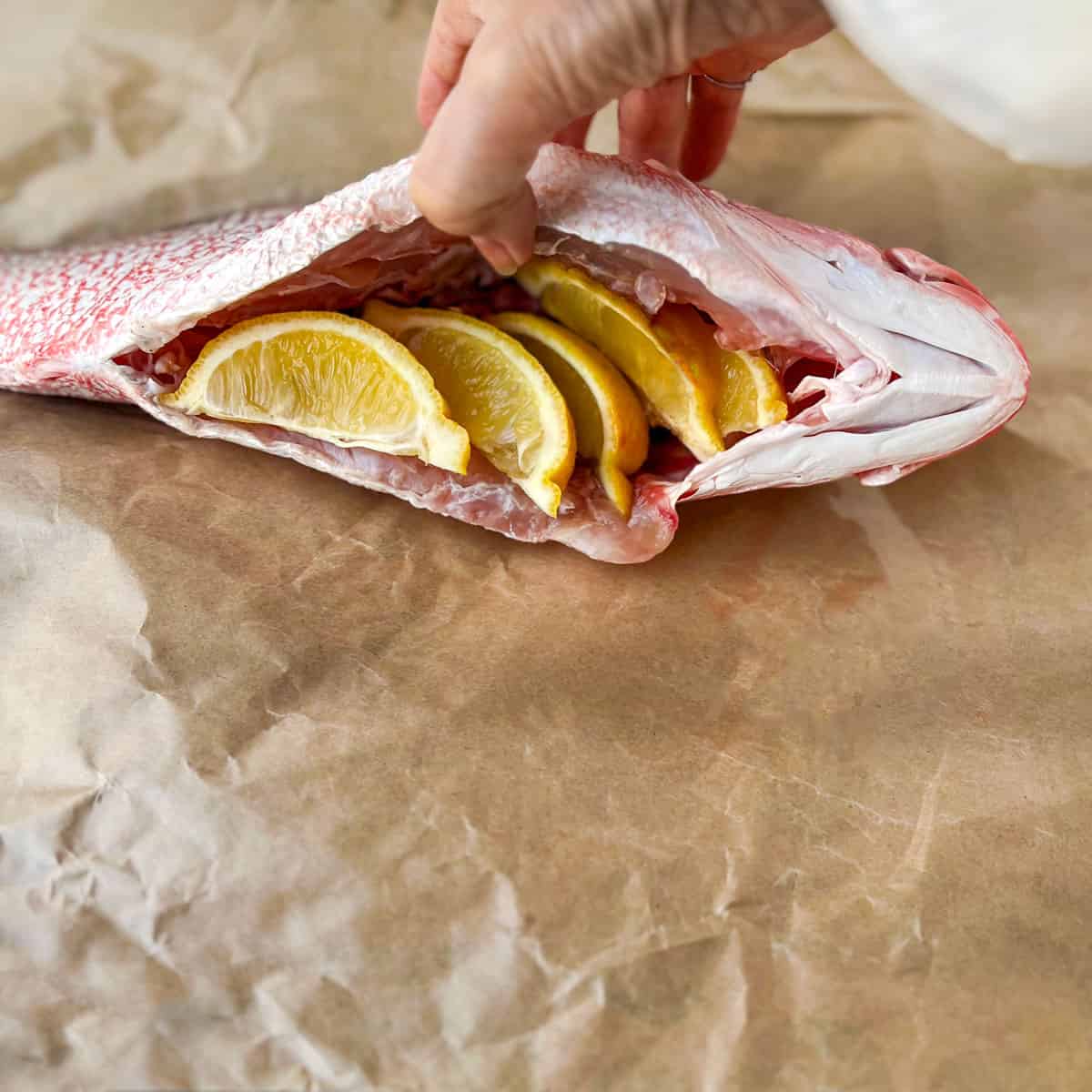
2. Stuff the Fish: Dab excess moisture off the fish with a cloth or paper towel. Stuff lemon wedges into the cavity of the fish, saving the remaining wedges for garnishing the finished dish.
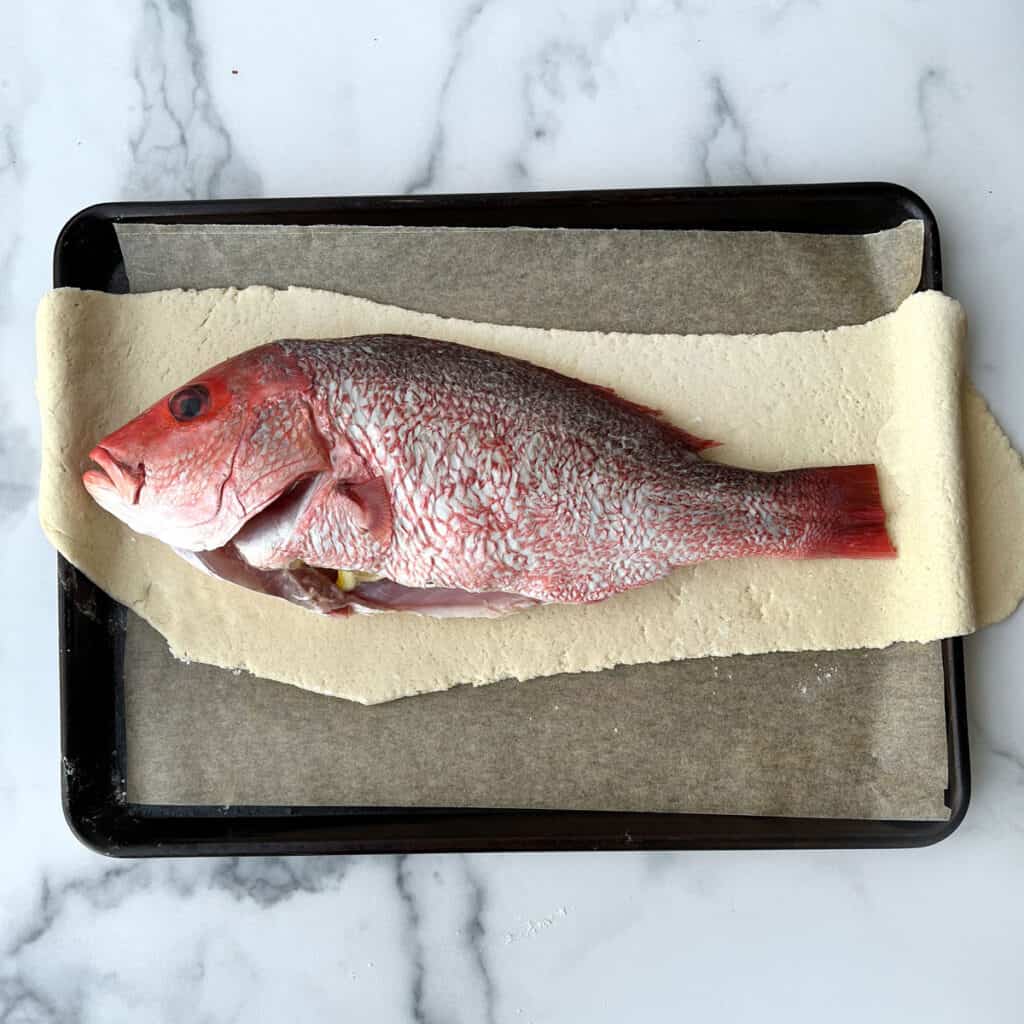
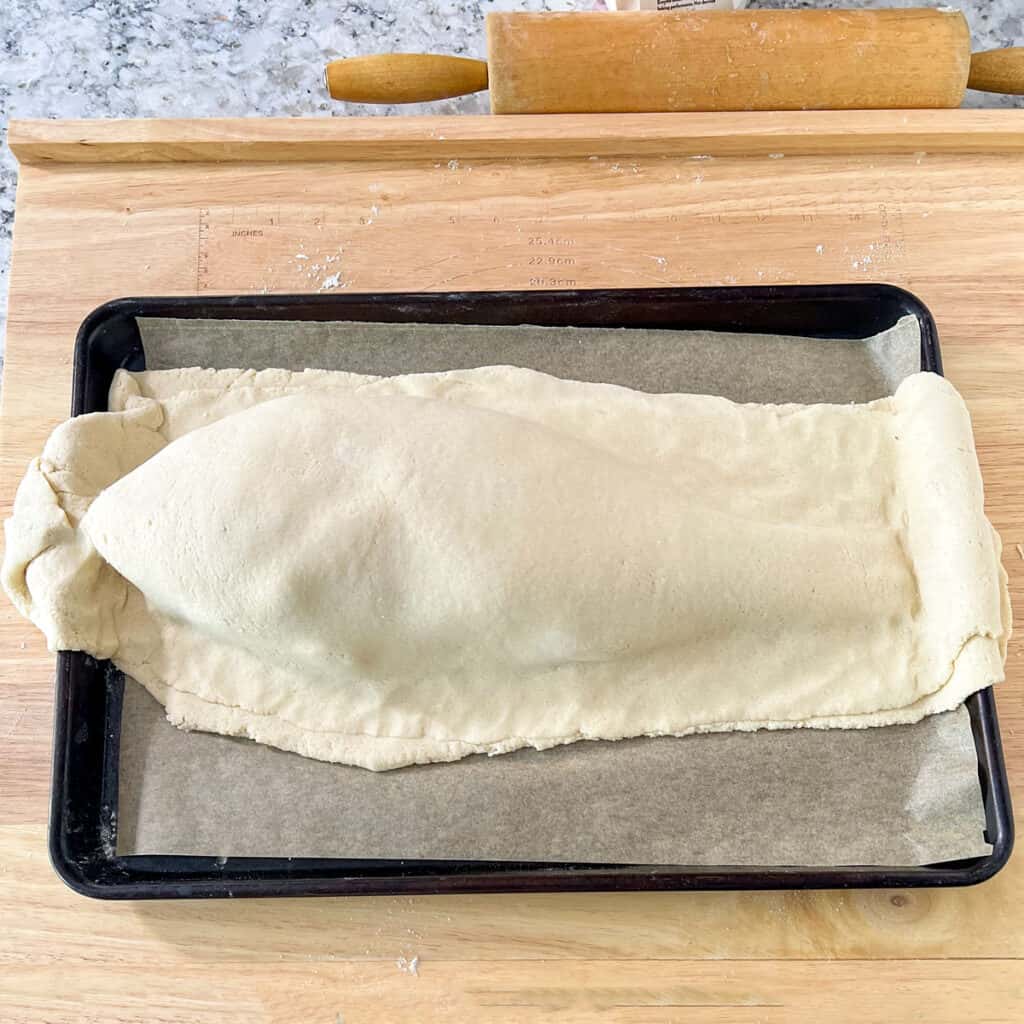
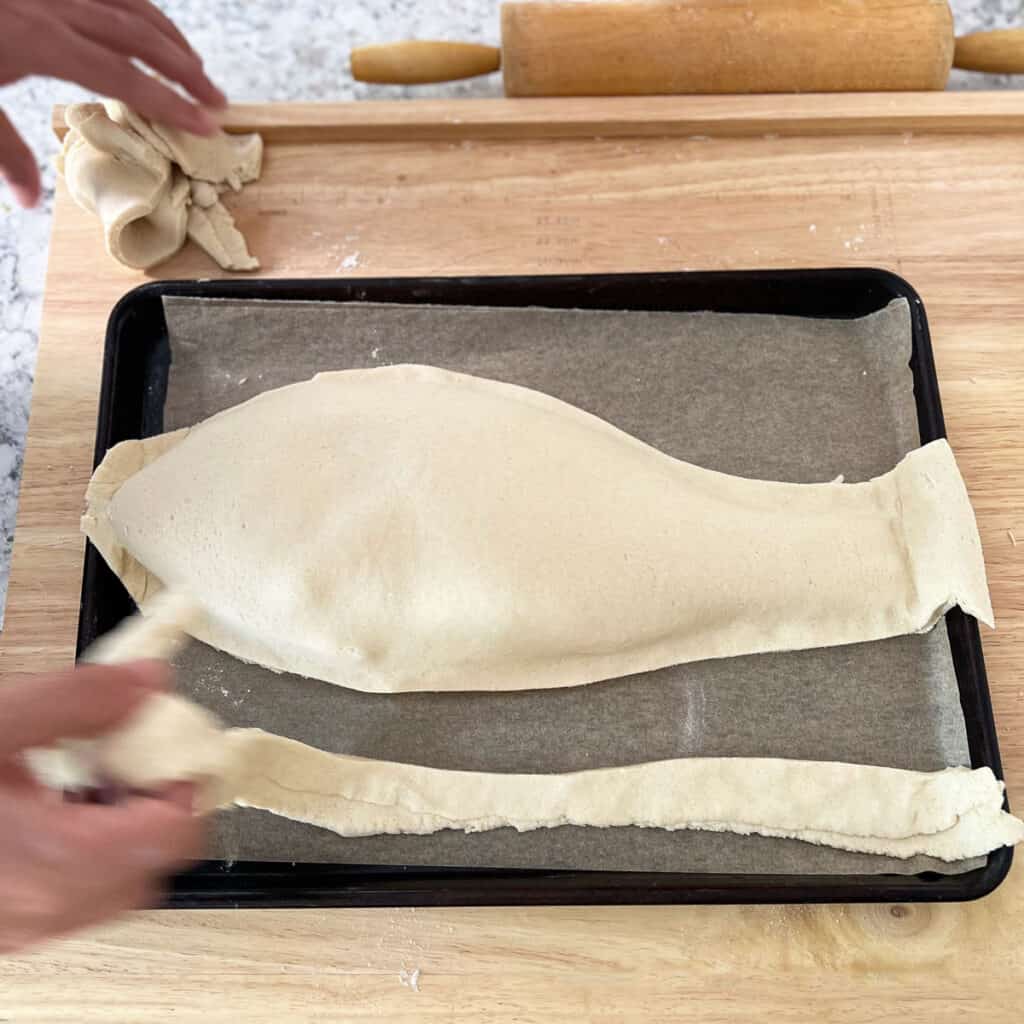
3. Wrap the fish in Salt Pastry: Cut the dough into two equal parts. Roll out one half until it is longer and wider than the fish. Transfer it to a parchment-lined sheet pan and place the fish on top.
Repeat with the other half of the dough and place it on top of the fish. Seal the seams together tightly and then trim the excess dough to so you have a fish encased in a fish-shaped pastry.
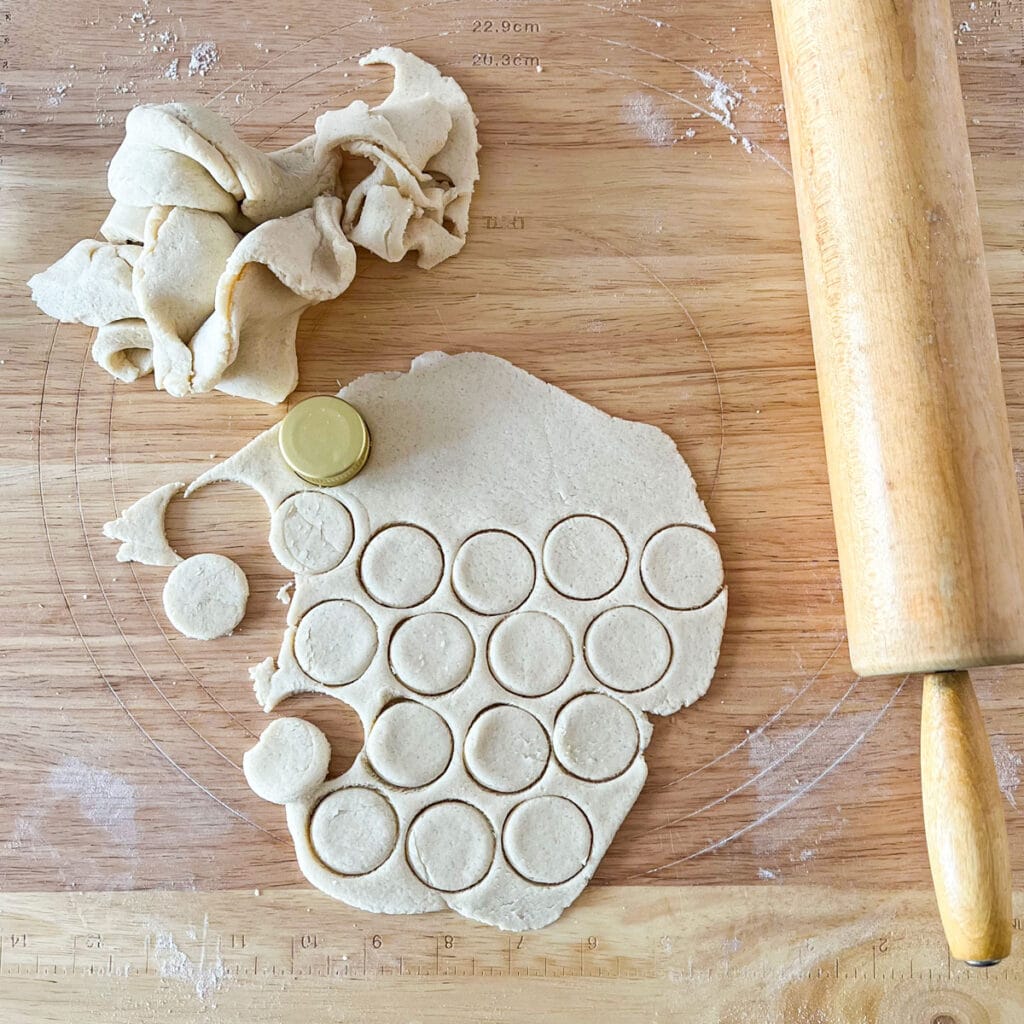
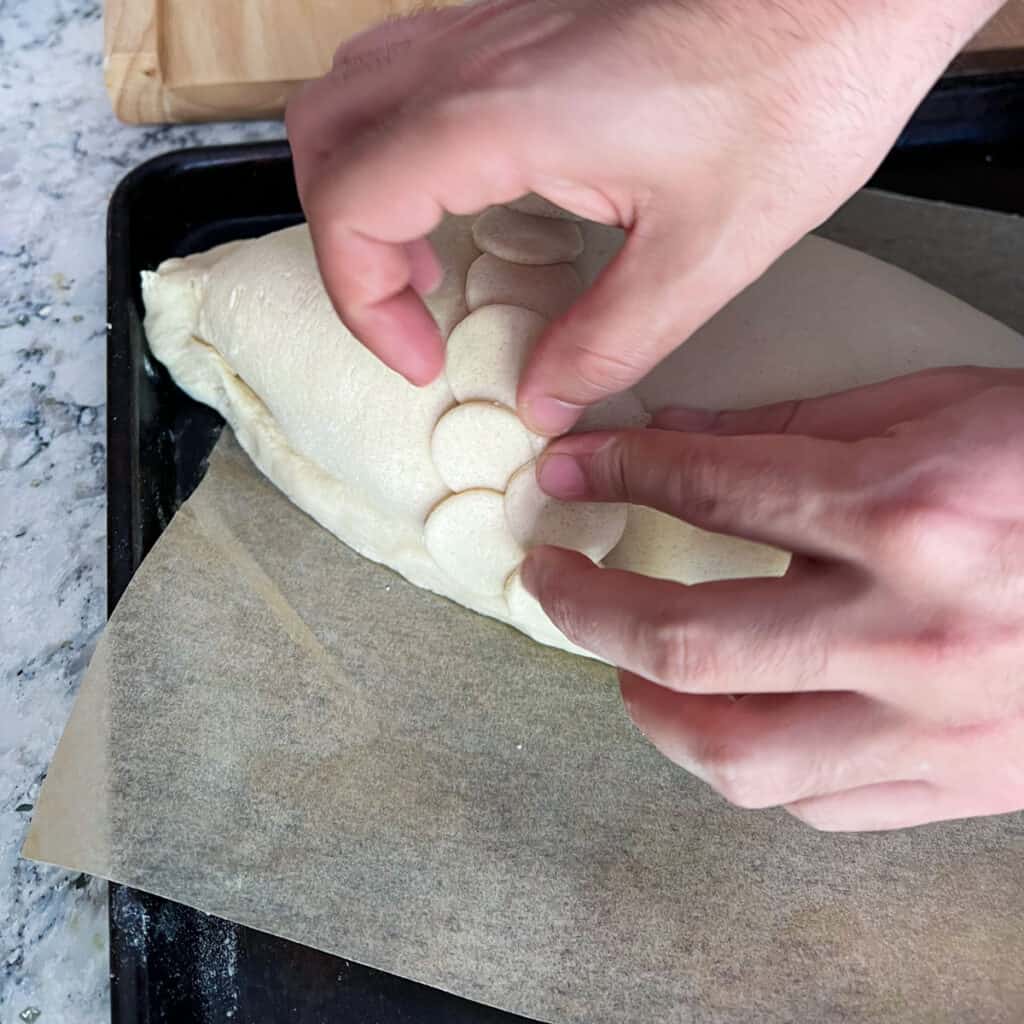
4. Decorate the Pastry (optional but highly recommended): Now comes the fun part where you decorate the pastry to really resemble a fish. Combine excess dough into a ball and roll it out. Use a bottle cap as a cookie cutter to stamp out discs for making fish scales and place them on the fish. Get creative and add fins, an eye and some big fishy lips. Then use a knife to carve a few lines into the fins.
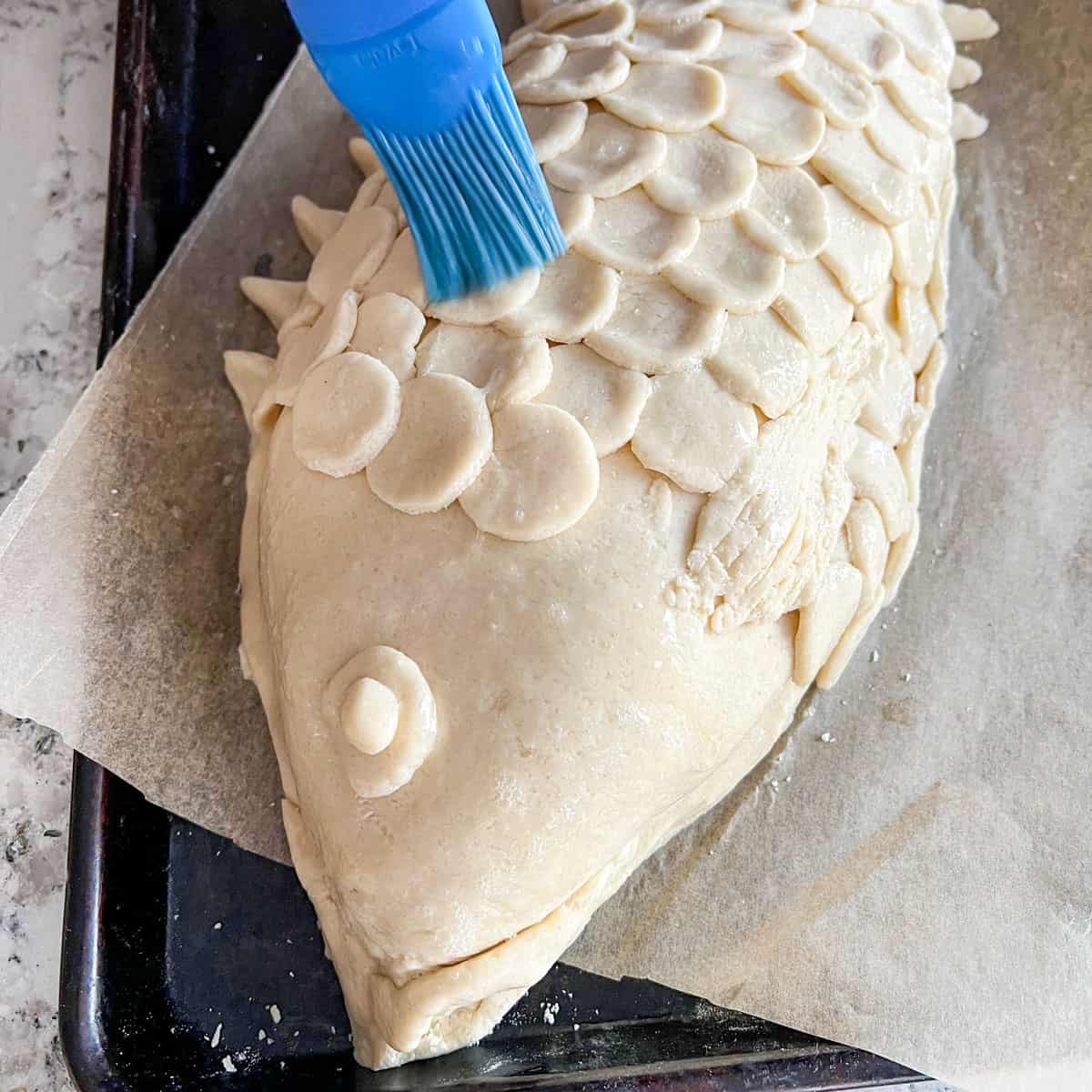
5. Brush with Egg and Bake: When your fish sculpture is complete, brush it with egg whites and bake it in the oven until perfectly cooked. After you remove it from the oven, transfer it to a serving platter and let rest for ten minutes, then serve. (more on how to carve and serve below)
Baked Fish In Salt Pastry FAQ
Believe me, you don't want to eat it. It's just too salty. Even the tiniest little crumb tastes like a mouthful of pure salt. Salt pastry is not meant to be consumed. It's used to encase the fish so it cooks evenly and emerges from the oven perfectly seasoned.
A whole fish cooked in a salt pastry crust will be perfectly seasoned - not too salty. Most of the salt remains in the pastry and helps create the insulation that allows the fish to steam gently. The salty pastry has contact with the skin of the fish which protects the tender flesh beneath from absorbing too much salt.
Cooking fish inside a salt crust is also a great way to cook a whole fish. Both methods will results in a very tender, well seasoned fish. But if you're cooking fish for a special occasion and you want to really wow the crowd, baked fish in salt pastry will steal the show!
You want a whole fish that weighs about 2 - 2 ½ pounds. Snapper, Branzino and Sea Bass are all great options.
You can use insert an instant read thermometer through the pastry into the thickest part of the fish to test for doneness. When the internal temperature of the fish is around 117-120°F, it's ready to come out of the oven. It will continue to cook in it's crust as it rests, and should reach a final serving temperature of between 130-135ºF. If you don't have a thermometer, no worries. Remove the fish from the oven after 25 minutes. It's best to err on the side of undercooking the fish, as you can always cook it for a few minutes longer, if necessary but an overcooked fish is not fixable.
How to carve a whole baked fish in salt pastry
Use a sharp knife to cut through the pastry and take your time, working your way around the fish. This is not a difficult task but you want to go slowly so you don't cut into the fish before the big reveal.
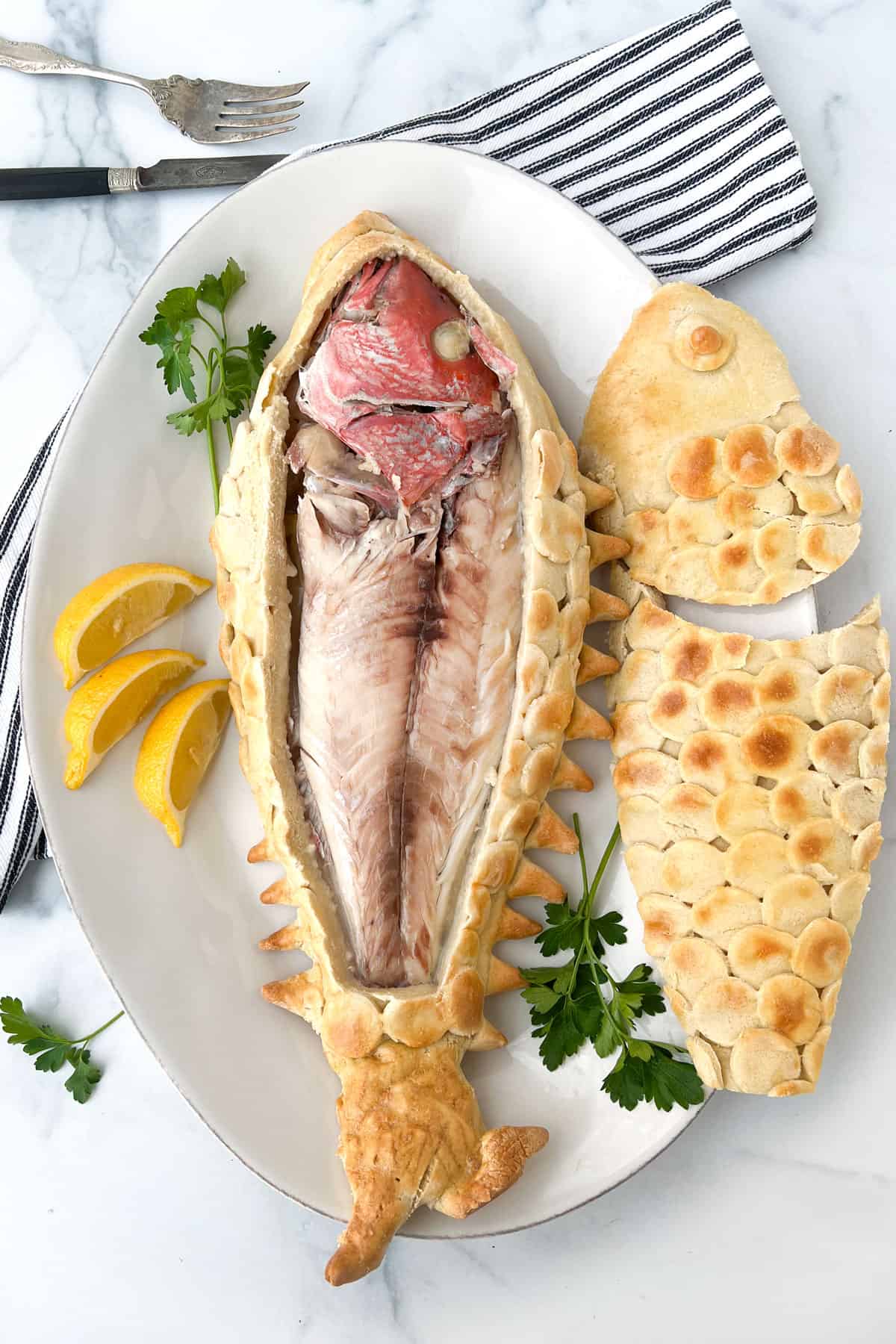
Expose the fish: Once you've removed the top pastry, pull off the skin by hand or by lightly dragging a fork along it. It should come right off. In fact, when the salt crust is removed it sometimes pulls the skin right off with it.
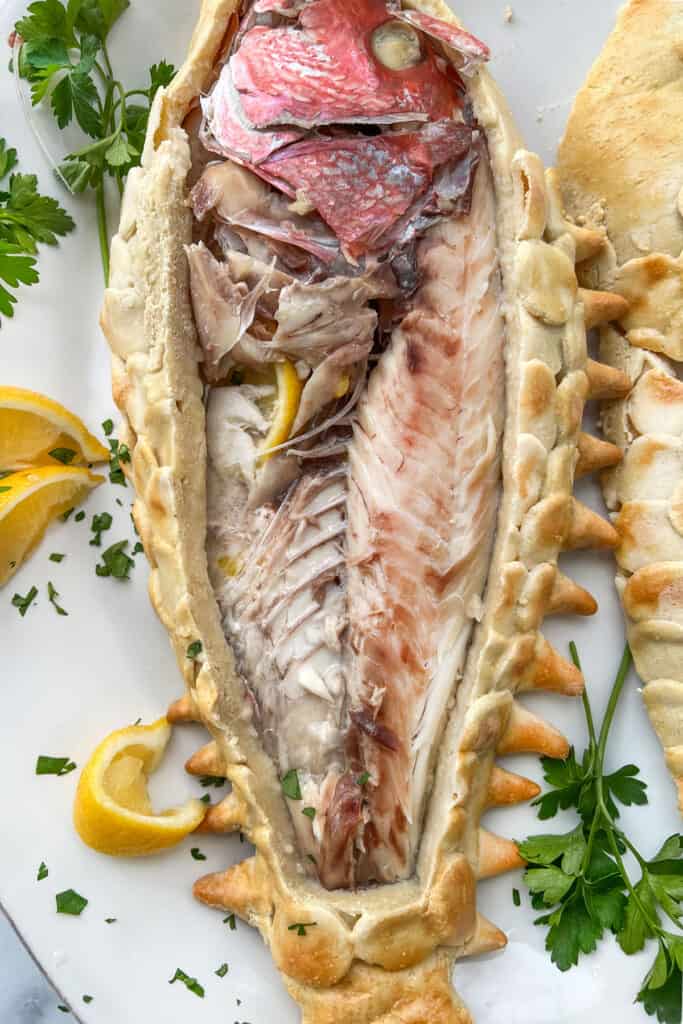
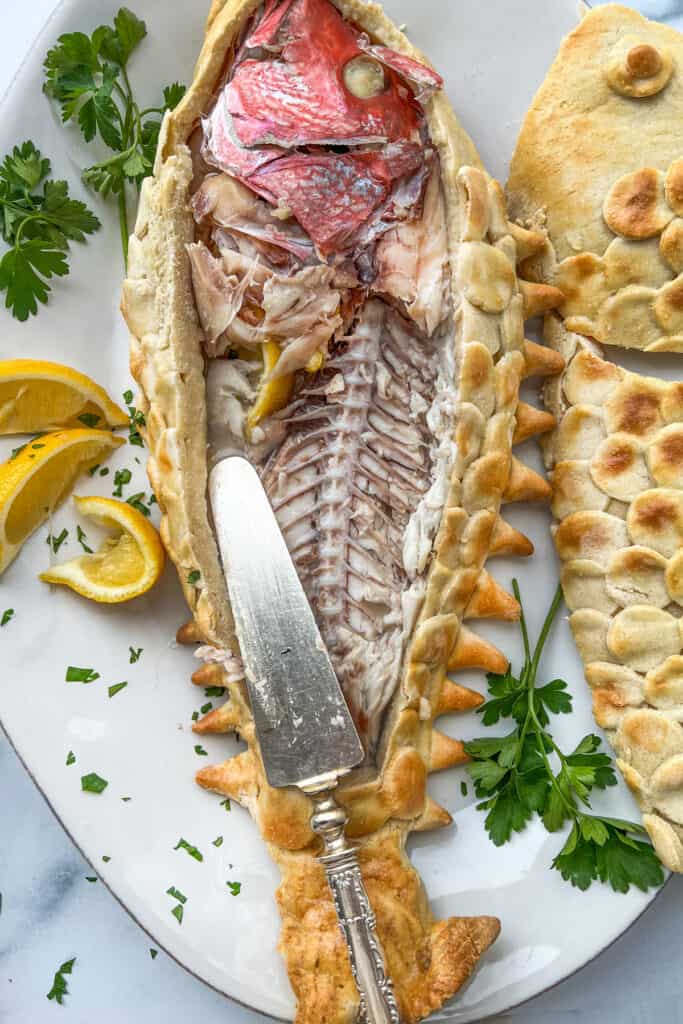
Remove both fillets from the top half: There are two fillets on the exposed top of the fish. Remove these with a spatula, spoon or wide knife. If things fall apart don't worry, that means it's extra tender and the taste will easily make up for any imperfection in the fillet shape.
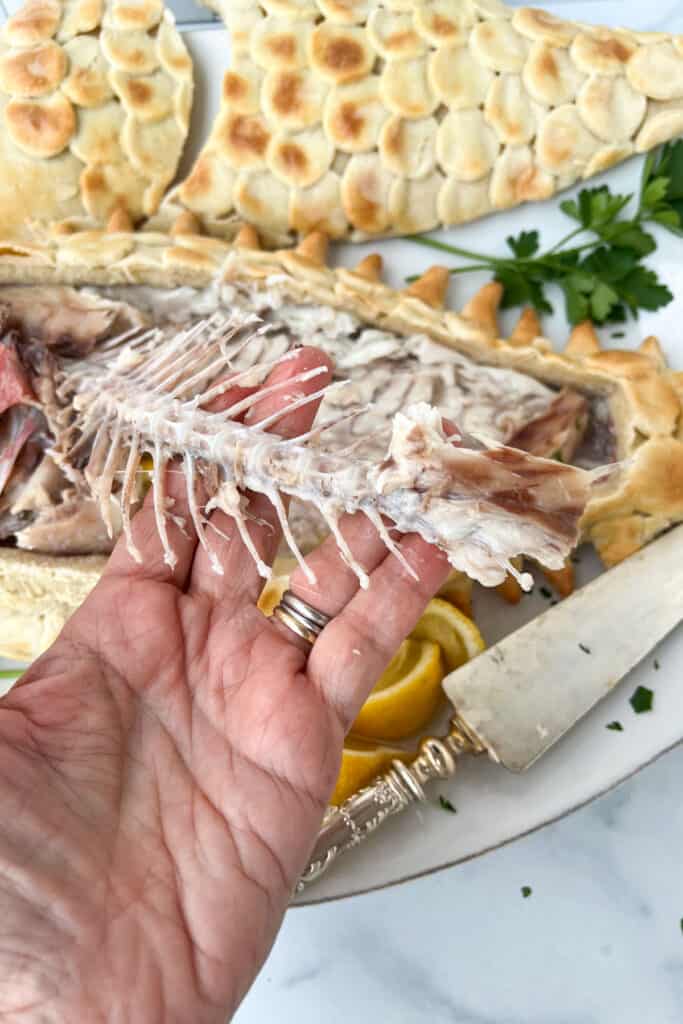
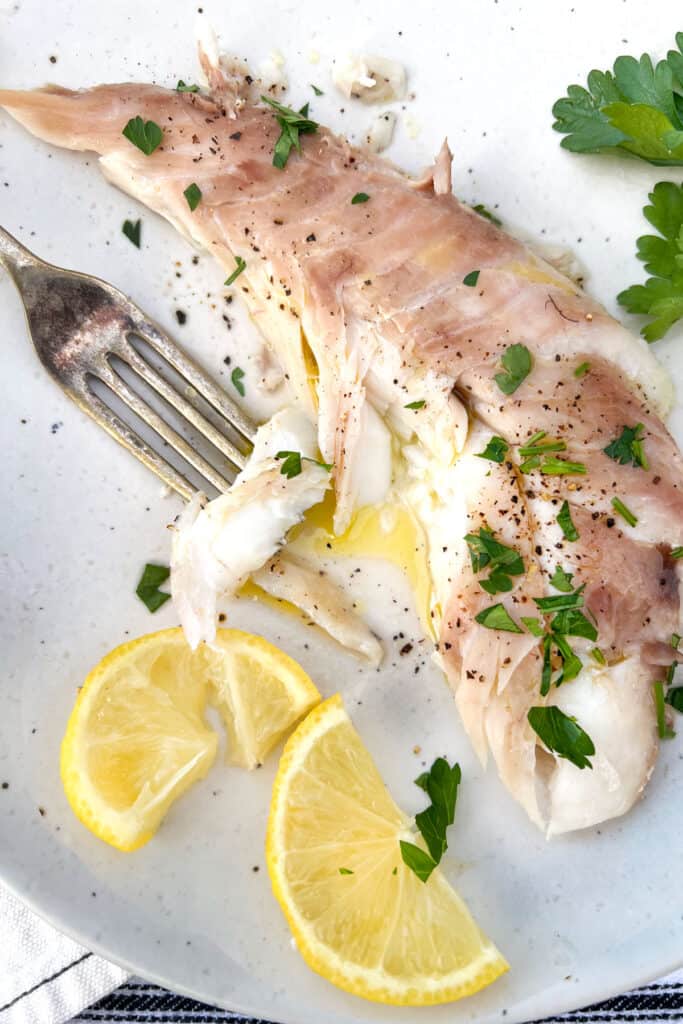
Take out the skeleton and remove underlying fillets: Once the top two fillets are removed the skeleton will be exposed. Simply pull it out and then you'll be able to get to the fillets underneath.
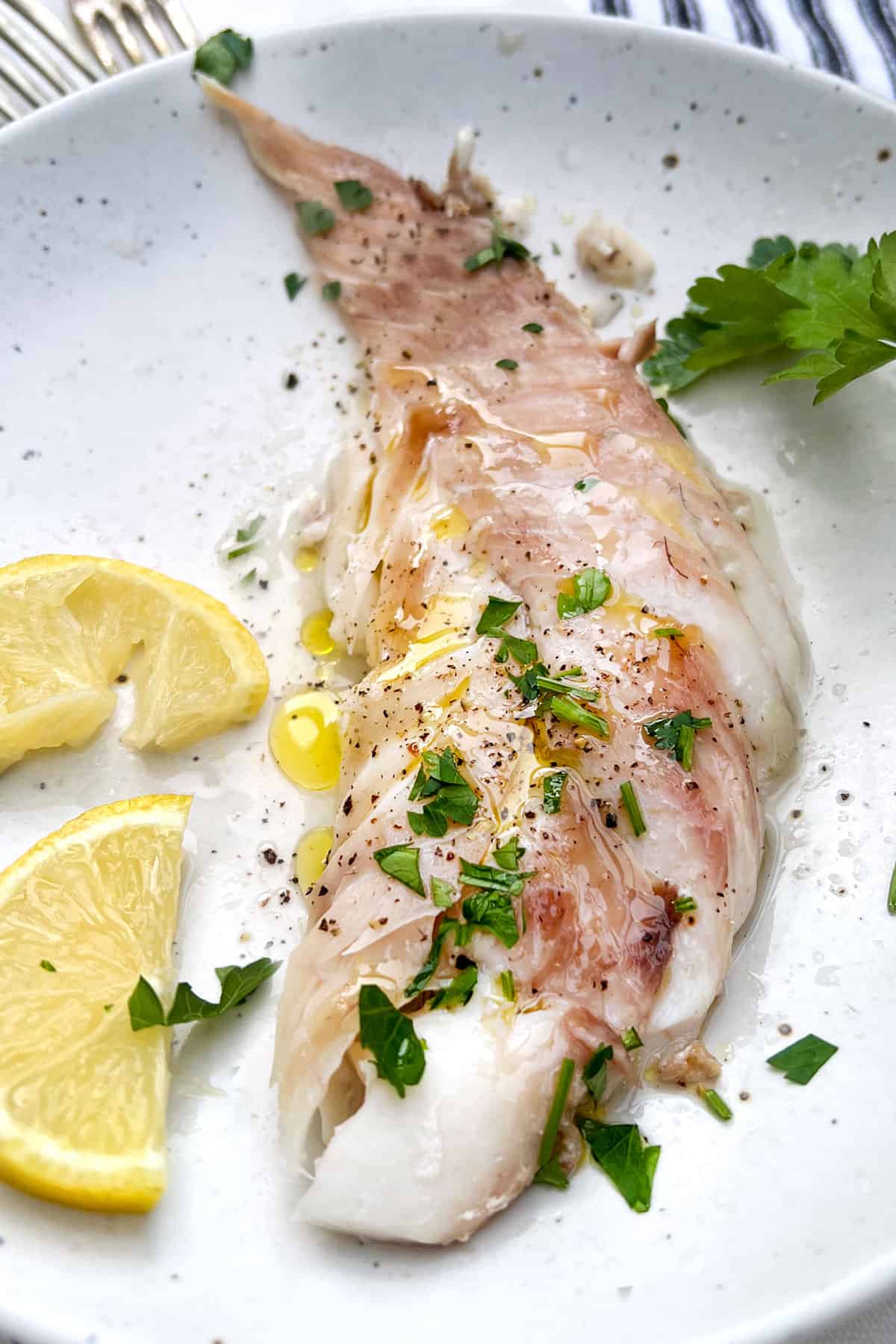
Don't forget about the cheeks: Possibly the best bite of the whole fish are the cheeks. There are only two of them and the chef deserves to eat at least one (if not both). Simply remove the skin from above the cheek meat and scoop out the beautiful little oyster of fish hiding underneath.
How to serve a whole baked fish in salt pastry
- Family style: This is one of my favorite ways to eat this dish. Cut open the salt pastry to reveal the fish. Pull the skin off and drizzle a little olive oil onto the flesh. Give everyone a fork and go to town.
- Plated with olive oil and lemon: Pour a few drops of both lemon juice and olive oil onto individual plates. Lift the fish off the bones with a fork or spatula and place a fillet onto each plate. Drizzle with a little more oil and lemon and sprinkle with chopped parsley and fresh ground black pepper.
- With a fresh green salad: A leafy green salad is the perfect complement. I recommend this Insalata Tricolore, this Shredded Kale Salad or this Green Salad.
- Topped with Mango Salsa: This Mango Salsa is great with fish!
- With a Side of Potatoes: Potatoes are a great side dish with this fish - especially our delicate Red Skinned Mashed Potatoes and (in keeping with the theme of salt) our simple and delicious Syracuse Salt Potatoes.
- A side of spinach: If you want a green veg on the side, tender sautéed spinach with garlic will be perfect.
Here's one more photo because I just love the sight of this fish in its crust. It's hard to imagine a more striking dish.
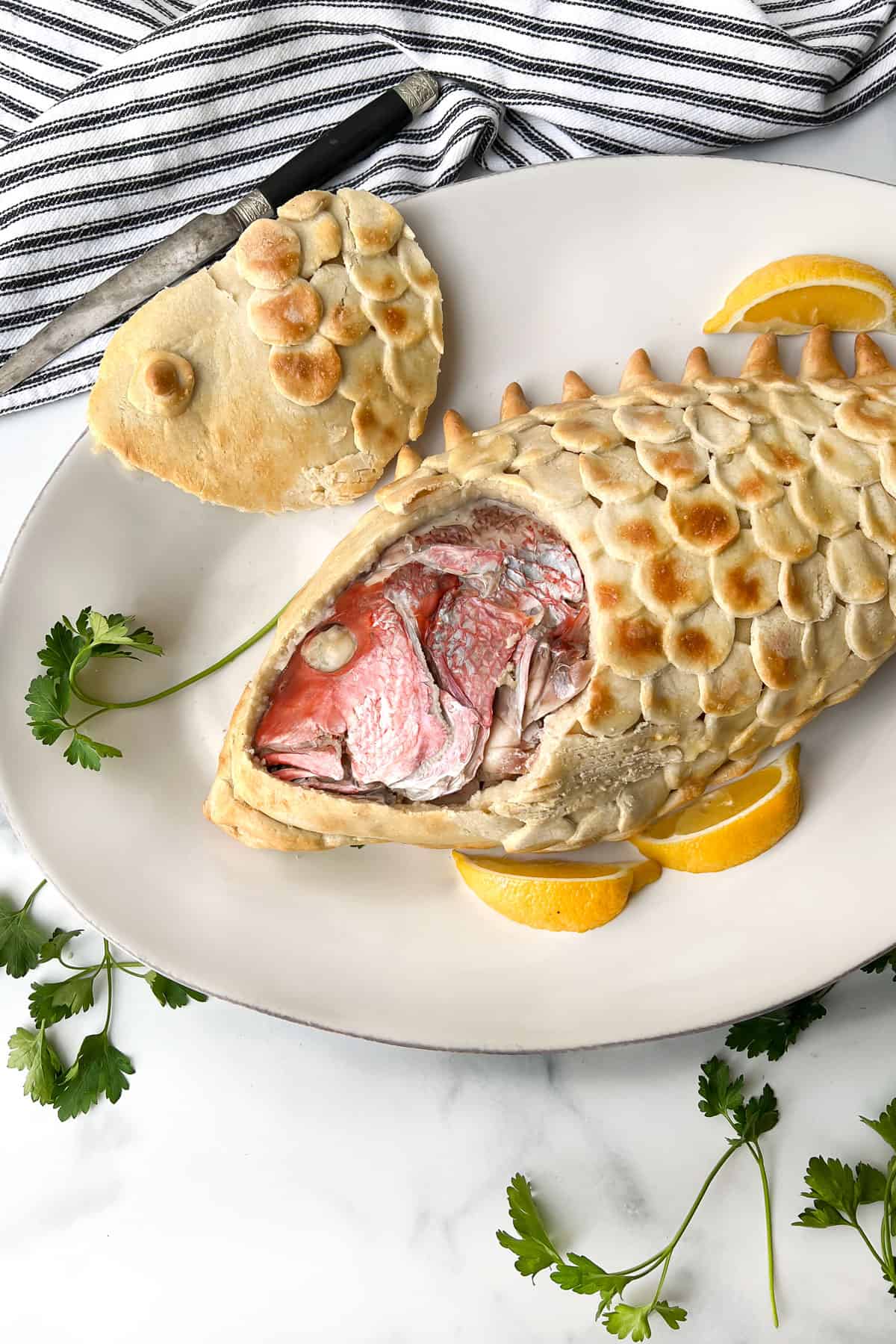
If you try this baked fish in salt pastry recipe, I hope you'll come back and leave a star rating and a comment. I'd love to know what you think! I also want to see photos of your fish in salt pastry. Be sure to share it on Instagram and use the hashtag #panningtheglobe.
PrintRecipe
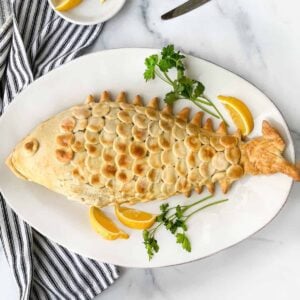
Baked Fish In Salt Pastry
- Total Time: 1 hour 40 minutes
- Yield: 4 servings 1x
Description
This is a fantastic fish recipe for a special occasion. This straightforward recipe yields a perfectly cooked, whole tender juicy fish that looks like a masterpiece and tastes even more incredible than it looks. Salt pastry is not meant to be consumed. It's used to encase the fish so it cooks evenly and emerges perfectly seasoned.
Adapted from a recipe in Josh Niland's cookbook, Take One Fish.
Ingredients
- 6 large eggs
- 4 ⅔ cups all-purpose flour (700 grams)
- 1 ¾ cups fine sea salt (500 grams)
- 1 ¼ cups water (300 milliliters)
- 1 whole red snapper (about 2 - 2 ½ pounds) scaled, gutted and pin-boned (note 1)
- 1 lemon cut into 8 wedges
Instructions
- Separate the whites out from 5 of the eggs (yolks not needed for this recipe) and add them to the bowl of a stand mixer fitted with the dough hook. Add the flour, salt and water and mix on low speed for 4-5 minutes until smooth. Turn dough out onto a lightly floured surface and form into a ball. Alternatively combine ingredients in a large bowl and mix with a wooden spoon until fully incorporated. Turn out onto a lightly floured work surface and knead for 10 minutes until smooth, then form into a ball.
- Wrap dough in plastic wrap and set aside for 45 minutes at room temperature or in the refrigerator for up to 24 hours. Bring to room temperature before using.
- Preheat oven to 425ºF/200ºC. Pat the fish dry with a cloth or paper towel and stuff the cavity with half of the lemon wedges, reserving the rest for garnish. (note 2)
- Line a rimmed baking sheet with parchment paper. Unwrap the dough, cut in half and transfer one half to a lightly floured surface, rewrapping the other half. Roll out dough into a rectangle longer and wider than the fish by at least 3 inches and transfer to prepared baking sheet. (It's ok if some of the dough hangs over the ends of the baking sheet. Extra dough will be trimmed after the fish is encased and can later be used for decoration). Place the fish, centered, on top of the rolled-out dough. Roll out the other piece of dough to the same size and place it on top of the fish. Make sure both pieces of dough are solid, with no holes or tears. (note 3)
- Mold the top and bottom pieces of dough around the fish and press them together between your fingers, where they meet, to create a tight seal. (note 4). Once you've got a tight seal, trim excess dough so you can see the shape of the fish beneath, being careful not to cut the seal. At this point the fish is ready to bake, or you can decorate it first.
- If you choose to decorate the fish, combine extra dough trimmings into a ball and roll it out, on a lightly floured surface, to ¼ inch thickness. Use a bottle cap or your olive oil cap as a cookie cutter to stamp out discs of dough that you can use to create scales and decorate the fish. Cut out and add on a tail, fins, gills, spines, lips, an eye or anything else that makes the presentation even more fish-like. (See photos in the post for examples). The cut-outs should easily stick to the dough casing but, if dry, add a dab of water to help them adhere.
- Separate out the egg white from the remaining egg and whisk it in a small bowl. Brush the top and sides of the fish-in-pastry lightly with egg white and bake for 25 minutes. The fish should be almost fully cooked and will continue to cook gently inside its casing even after it comes out of the oven. (note 5) For a darker color on the pastry crust, turn the oven up to broil/grill and place the fish on a high shelf just under the broiler/grill element for 30 second to a minute, watching carefully, until desired color is reached.
- Remove fish from oven and let it rest in its pastry for 10 minutes to reach serving temperature. Transfer it to a serving platter, decorate around it with lemon slices if you like. Set it on the table, dramatically cut open the pastry for all to see and serve immediately. (Note 6)
Notes
- Choosing a fish: Red Snapper, Branzino and Sea Bass are all good options. The recipe will still work if the scales are left on. It is also fine to leave the pin bones in, just make sure everyone knows to eat around them.
- Stuffing the cavity: Feel free to swap the lemons out for herbs, peeled garlic, sliced ginger or a combination. Or smash the bottom of a lemongrass stalk, cut it into large chunks and stuff in into the cavity with some cilantro sprigs and sliced shallots.
- Rolling dough: If the dough tears or forms holes, recombine, knead and try again, or patch holes with small pieces of dough. The important thing is to make sure there are no gaps or holes so the fish can be fully and securely encased.
- Creating a seal: If there is a lot of flour on the dough it may be hard to create a tight seal. Use a pastry brush or finger to apply a small amount of water to areas that are having a hard time sticking and this should fix the issue. You can also use a fork to crimp the two pieces of dough together, as you would for a pie crust.
- Checking doneness: To check for doneness, insert a probe thermometer into the thickest part the fish. If the reading is between 117-120°F, the fish is ready to come out of the oven. It will continue to cook in its pastry casing as it rests and should reach a final serving temperature of 130-135ºF. Please note that the USDA recommends minimum temperature for fish of 145ºF. Many chefs suggest a lower minimum temperature for a flakier more tender fish. I am personally comfortable with a lower serving temperature but use your own judgement here - whatever you're comfortable with.
- Carving and serving: Carefully cut around the top edge of the pastry and remove it, revealing the fish beneath. Discard the pastry. It's extremely salty and not meant to be consumed. Peel off any remaining fish skin and discard it. Remove the top fillets using a fish spatula or other spatula and transfer them to individual plates. Carefully lift the spine of the fish, starting from the tail, and discard it. Use a spatula to remove the underlying fillets and transfer them to plates.
- Serve fish with lemon wedges and a drizzle of olive oil. (See post for more serving suggestions)
- Prep Time: 30 minutes
- Resting time: 45 minutes
- Cook Time: 25 minutes
- Category: Fish
- Method: Bake
- Cuisine: American




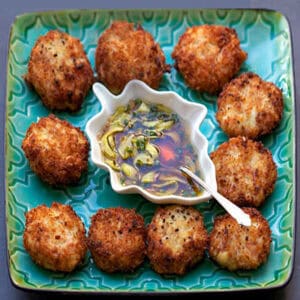
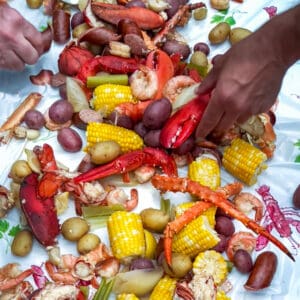

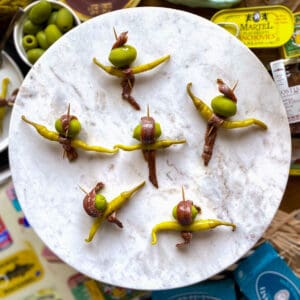
Lynn
Beautiful! This dish is inspiring - fish can be intimidating, but I love that the salt pastry helps the fish to cook to perfection. It's of-fish-ial, I'll be trying this one out soon. Thank you!
Lisa Goldfinger
Haha, I'm glad it's of-fish-ial Lynn - I can't wait to hear how it turns out. I hope you'll report back and also post a pic on insta so I can see your masterpiece.